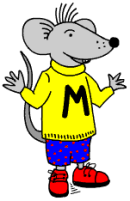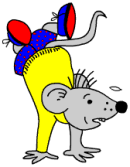 These worksheets are from the Using and Applying Maths section of the Primary Framework for Maths. In schools this strand is considered very important as it shows how well children understand the maths that they have learned and how well they can apply it to different situations. Both these worksheets look at subtraction and making up number sentences. Think of subtraction as taking away one number from a larger number and try to encourage writing three short sentences using the numbers provided, but using different ideas from those provided.
These worksheets are from the Using and Applying Maths section of the Primary Framework for Maths. In schools this strand is considered very important as it shows how well children understand the maths that they have learned and how well they can apply it to different situations. Both these worksheets look at subtraction and making up number sentences. Think of subtraction as taking away one number from a larger number and try to encourage writing three short sentences using the numbers provided, but using different ideas from those provided.
Free Y2 maths worksheets: Making subtraction number stories (pg 3)
Free Y2 maths worksheets: Making subtraction number stories (pg 4)
 This worksheet looks easier than it really is. To answer the questions correctly children need a really good understanding of the properties of 2-D shapes, including the diagonals. Kite, parallelogram, rhombus and trapezium are all shown. They should also be familiar with the term adjacent. If they can do this page then they are doing really well!
This worksheet looks easier than it really is. To answer the questions correctly children need a really good understanding of the properties of 2-D shapes, including the diagonals. Kite, parallelogram, rhombus and trapezium are all shown. They should also be familiar with the term adjacent. If they can do this page then they are doing really well! This is about as hard as it gets when adding in your head. Anything harder it would be expected that written methods would be used. When adding two amounts such as £2.47 + £3.53 in your head most people begin with the pounds – the opposite of written methods. I would look at this sum and add the pounds and ten pences making £5.90 then add on the units, 7 first making £5.97 then the 3p making £6.00
This is about as hard as it gets when adding in your head. Anything harder it would be expected that written methods would be used. When adding two amounts such as £2.47 + £3.53 in your head most people begin with the pounds – the opposite of written methods. I would look at this sum and add the pounds and ten pences making £5.90 then add on the units, 7 first making £5.97 then the 3p making £6.00